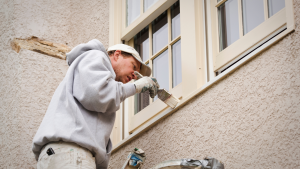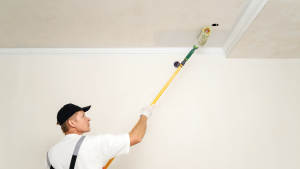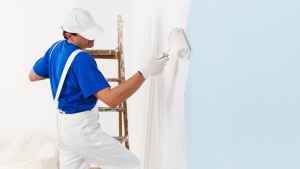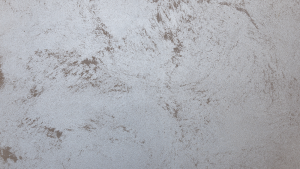Starting a painting project may be a thrilling experience. endeavor, but the key to success lies in proper planning. One crucial aspect of this planning is estimating the amount of paint needed for your project. Whether you’re painting a room, an accent wall, or an entire house, a precise estimate ensures you have enough paint without overspending or running out midway. In this guide, we’ll explore how to estimate the right amount of paint for your project and provide five practical examples.
Visit https://newcityhousepainter.com/ for more information.
How to Figure Out How Much Paint You Need
Estimating the amount of paint required involves a straightforward process that considers the dimensions of the surface to be painted. To obtain a precise estimate, adhere to these steps:
- Measure the Surface Area: Begin by measuring the height and width of the walls you plan to paint. For a more accurate estimate, subtract the areas of windows and doors.
- Calculate the Surface Area: Add the height multiplied by the breadth of each wall. Up the totals. This gives you the total square footage of the surface to be painted.
- Determine Paint Coverage: Check the paint can for the coverage information. It typically provides the square feet a gallon of paint can cover. Divide the total surface area by the coverage to determine the gallons needed.
How to Calculate the Amount of Paint to Paint the House
Estimating paint for an entire house requires a comprehensive approach. Consider these additional factors:
- Number of Rooms: Calculate the paint needs for each room separately using the method mentioned earlier. Add the totals to determine the overall quantity required.
- Trim and Accent Areas: Factor in any trim, accent walls, or other surfaces that require a different color. Measure and calculate these areas separately.
- Exterior Surfaces: If you paint the exterior, measure the total surface area of all sides of the house. Adjust for doors, windows, and other openings.
- Multiple Coats: If you plan on applying multiple coats, adjust your estimate accordingly. Multiply the total gallons needed by the number of coats.
Five Examples of Estimating Paint
Let’s apply the estimation process to five common scenarios:
Example 1: Painting a Single Room
- Wall height: 10 feet
- Wall width: 15 feet
- Two windows (each 3×4 feet)
- One door (3×7 feet)
Total wall area = (10 x 15) – (2 x 12) – (3 x 7) = 150 square feet. Assuming one coat of paint, if they can cover 350 square feet per gallon, you’ll need approximately 0.43 gallons.
Example 2: Accent Wall
- Wall height: 8 feet
- Wall width: 12 feet
Total wall area = 8 x 12 = 96 square feet. If the paint coverage is 400 square feet per gallon, you’ll need 0.24 gallons.
Example 3: Whole House Interior
- Four rooms with a total wall area of 1,200 square feet
- Trim and accent areas of 200 square feet
- Two coats of paint
Total wall area = 1,200 + 200 = 1,400 square feet. If the paint coverage is 300 square feet per gallon, you’ll need 2.8 gallons for one coat. For two coats, you’ll need 5.6 gallons.
Example 4: Exterior Painting
- Total exterior wall area: 2,000 square feet
- Multiple doors and windows
Adjusted total wall area = 2,000 – (number of doors/windows x average size). Assuming one coat of paint with coverage at 250 square feet per gallon, you can estimate the required gallons.
Example 5: Painting a Large Room with High Ceilings
- Wall height: 12 feet
- Wall width: 20 feet
- Two windows (each 4×5 feet)
- One door (4×8 feet)
- Two coats of paint
Total wall area = (12 x 20) – (2 x 20) – (4 x 8) = 216 square feet. Considering two coats and paint coverage at 300 square feet per gallon, you’ll need approximately 1.44 gallons.
Estimating the amount of paint needed for your project is crucial in ensuring a smooth and cost-effective painting process. By understanding the surface area, factoring in trim and accent areas, and considering the specific requirements of your project, you can confidently estimate the right amount of paint.
Whether tackling a single room or an entire house, mastering the art of estimation will help you achieve a professional finish while staying within budget. So, roll up your sleeves, armed with these techniques, and let your painting project shine with precision and efficiency.







